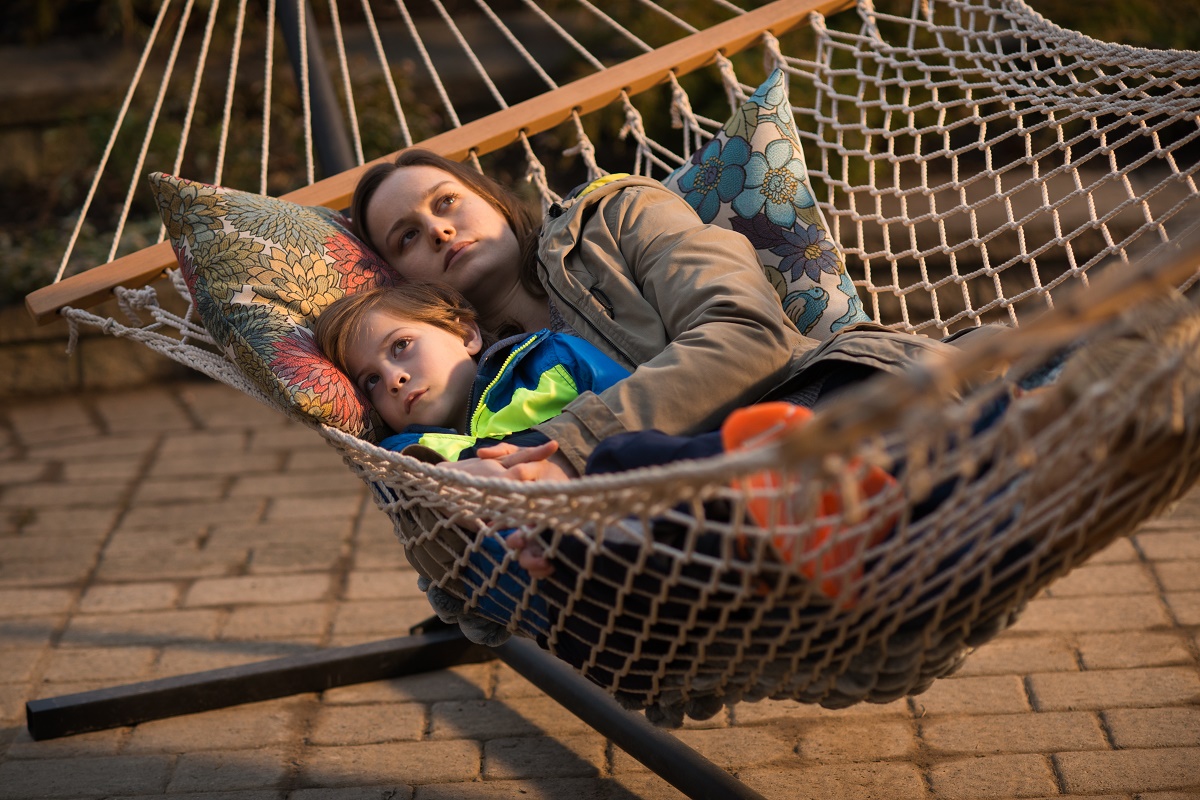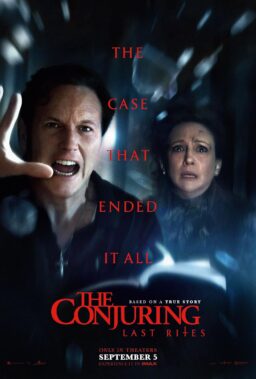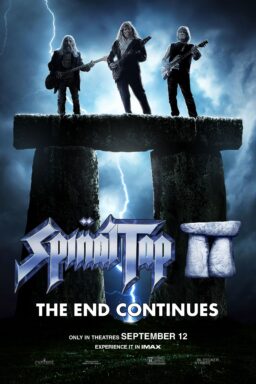Brie Larson has been described by many as a “revelation” in “Room.”
The appellation is indicative of how strongly people feel about Lenny
Abrahamson’s stunning drama, but it’s a bit off in that anyone who has seen
Larson’s work in films like “Trainwreck,” “The Spectacular Now” and “Short Term
12” knew that Larson had this kind of breathtaking performance in her. We were
just waiting for the rest of the world to figure it out. And with “Room”
winning the People’s Choice Award at Toronto—a common forecaster of Oscar glory—Larson
is about to go from critical darling to household name.
In the adaptation of Emma Donoghue’s hit book, Brie Larson
plays “Ma,” mother to Jack (Jacob Tremblay), a son with whom she shares one
singular room. She has been held in this room for seven years, prisoner to a maniac
referred to only as Old Nick (Sean Bridgers). Ma has done everything to protect
Jack, turning this room into his whole world, and shielding him from the true
horror of their situation. When Ma and Jack escape, “Room” shifts to become a
film about survivors and the tie between mother and child that strengthens both, in ways that films have rarely been able to capture.
On the first interview of the day near the end of a lengthy
press tour, Larson showed no signs of fatigue over talking about “Room.” It’s
clearly a work that she’s not only proud of but passionate in discussing,
especially when it comes to the film’s unique process and its message of hope.
I want to start with “prep”
for a role this challenging and removed from what we typically experience in
everyday life. When you get this part, what’s the first thing you do as an
actress?
You go in every different direction to try and make sure all
bases are covered. I reached out to try and find a trauma specialist to speak
to me about how the brain organizes this kind of trauma. Sexual abuse. The way
it’s happening here. Speaking with a nutritionist about what would happen to a
body after seven years of being in a space with no vitamin D, lack of
nutrition, no shampoo, toothbrush, hair brush. How does the body react? Then,
creating a vivid back story. I spent a lot of time with Lenny crafting what we
felt was Joy Newsome before she becomes Ma. That was a link that we could sort
of build her from that point and then tear her apart. And then we would focus a
lot on her bedroom. It became the easiest way—in one shot—to get insight into
her mind. Both spaces—her bedroom and “room”—are physical representations of
what’s inside her mind. You can see very clearly. You get it. And then linking
the two. I had collages in my bedroom when I was a teenager. So I wanted a
collage in her bedroom. And then a collage in “room” made of the drawings that
Jack and Ma had done of each other over the years.

It sounds incredibly
collaborative with Lenny.
Yeah. It had to be.
Why?
This is a project that deals with something so far removed from our life that it took everyone from every angle really putting so
much thought into every detail of it so that we could reduce it to the point of
being universal again. Because the story is very sparse, every single thing in “room”
has to tell a story and has to have justification behind it. Nothing would be
in there unless it had a reason to be in there. Why is it there? The rag that I’m
cleaning the floor with are baby clothes cut up from when Jack was a baby.
You have a back story
for every prop in “room”?
Everything. We built all of those toys out of the trash that
we would have had. It became complicated when shooting because, usually,
Wardrobe and Props have things they’re in charge of, but in this everything was
everything. Wardrobe didn’t get collected at the end of the day—it got put back
in “room.” The props—because we were shooting chronological order—would have to
stay in the place that we left them.

That has to impact
you as an actress—to be able to stay in such a complete, unchanging
environment.
Yeah. “Room” becomes this safe, warm, intimate space—also because
there are only two actors. It was very nice and very easy to see…it was so
contained. Everything was usable. It’s not like in typical movies where you
have a prop. You can even have plastic ice. Everything has to be practical.
Even lighting. We couldn’t have artificial lighting. Our DP had to figure out
how to utilize a skylight and a lamp and the light that comes from a heater as
a way to realistically light us. And the production designer—where would the
skylight fade the tiles? Where would mold drip down? Where would there be
things picked away by Jack laying in bed? Or parts where it rubbed off?
Does that realism
make it more intense? Is it hard to shake? I’ve talked to actors who discuss
dark roles being difficult to leave behind. Was this one for you?
No. It’s important for me to not—I’m not there for 30 days.
We’re yelling cut. I’m talking as myself. Part of the eight months of prep was
working really hard at refining a skill to really be able to—Ma was almost a
location in my brain I could access. It was a place I could go to and it was a
place I could leave. I had the ability to turn it on and off. It was too long
of a shoot. It was a 49-day shoot. There’s too much that I have to do. I don’t
have the time to be fully emotionally consumed by it. There are times when you
connect with something that is rather painful, and you realize that it’s a
reality for some people. And that’s hard to shake. The research into sexual
abuse—that’s something I feel very passionate about because of researching it
and learning more about it. You can’t just be like, “Well, the movie’s over
now.” There’s real truth and reality to it. It’s very easy to go down that pathway of our lives, but part of my job is exploring other avenues of how to
live. When you see those sides you question a lot of your own life, but I think
that’s really exciting and enriching. I don’t find it to be depressing.

The detail of the
first half that you describe, how does that change in the second half? I’m
curious about the internal monologue and process of the second half in that
Lenny doesn’t often stage big monologue or exclamations. There’s a lot going on
inside, and I’m wondering how precise that is. Do you and Lenny say, “This is
what I’m thinking in this moment” or is it more organic? How planned is the
process?
You spend as much time as possible in prep where you have
discussed it to the point of over-discussed, re-discussed, and questioned. When
it comes time to shoot, she is such a complete person, so full in what we know
her to be, that all you have to do is like a chemical reaction—put her in room with
Jack. And then you go through that journey. Everything is so fresh in your mind
because you’re living it, in order, day by day. So, there are certain things
that are so big and almost impossible to comprehend—like going back to your
childhood bedroom after something like this. That was the one moment that we
were like, “I can’t imagine what that would be.”
And you can’t talk it
through that much.
There’s no point! The movie that we were making wasn’t about
knowing but about allowing it to be what it was, to be honest. In my personal
opinion, you miss out on the beauty of the moment if you go in planning what
the moment is. It’s like having a vacation too jam-packed with activities. You miss
all of the sunsets. You have to have some idea. And it became easy to
understand textually what we needed because we were shooting in order. You
could go, “we’ve gone kind of deep, and now we go in this direction and explore
back here.” But, for the most part, every day had some of the unknown, and I
think that’s how Lenny and I like to work—not going in “It has to be this way.”
In the bedroom scene, I asked to not see the bedroom until we saw it, and then
walk in and really feel it. The first reaction is sort of weirdly
anticlimactic. It’s sort of taking it in but too big and too overwhelming and
too much to process. It wasn’t sort of her on her knees, crying. The brain has
such a hard time processing in the moment. You see a real process of
reflection.

We see so many films
that don’t get that, in which everyone is saying exactly what they’re thinking
and feeling in every moment.
[Laughs.] We are not that self-aware.
Could this have
worked if you had not done it in chronological order?
If we had to, we would have figured it out. I don’t think it
would have been the same one. I think it’s a real testament to movies that are
shot out of order that are so seamless. Wow. It takes a lot of pre-planning and
remembering. You have to keep like a catalog so you know how to fit it all
together. I didn’t have to question it or remember. What should this be? I just
was able to dive right in every day and see what was there.
And did that give you
a better impression of how the whole film fit together and would look when you’re
not shooting scene 24 and then 13 and then 45?
[Shakes her head.] It’s still impossible because so much
happens with music and editing and pacing. You know that you’re doing scenes
that are honest, but does that translate through the screen? Are these
emotional truths to us the same as to somebody else? We always felt like “room”
was a space that we felt very sure of that would be dynamic and interesting and
very rich, but the stuff after the escape sequence—how do you keep that going
for the second half? How do you find what is really a much darker and emotional
side on the second half? How do you keep people invested in the journey? How do
we not exhaust the audience? The performances would be strong, but is it going
to be too painful?












